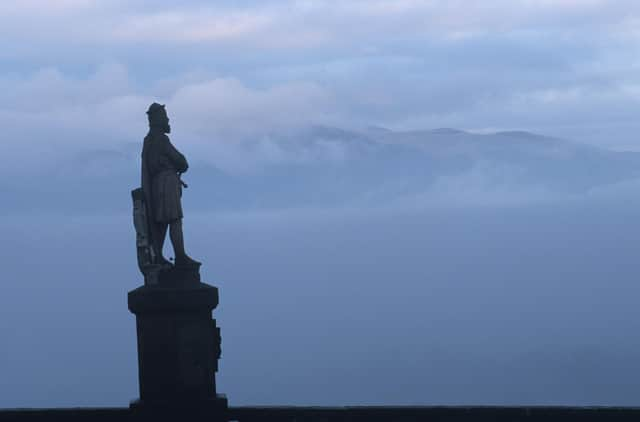The Declaration of Arbroath at 700: Everything you need to know


Seven hundred years ago, this important document left Arbroath Abbey on a long journey to Pope John XXII in Avignon.
The Declaration of Arbroath was dated 6 April 1320: it may not have left Arbroath on that precise date, but the date is significant.
Advertisement
Hide AdAdvertisement
Hide Ad

In that year, 6 April was the Sunday after Easter, which marks a festival known as Quasimodo. Nothing to do with the Hunchback of Notre Dame (except that he was found abandoned on the Sunday after Easter): this was a time of renewal and redemption.
The Declaration was seeking redemption in Scotland’s relationship with England and with the wider world.
It was a letter from the Barons of Scotland to the Pope, demanding freedom for their nation and recognition for King Robert the Bruce.
The barons were a swathe of noblemen and landholders, who also said they represented ‘the whole community of the realm’. Their letter was accompanied by two others, one from the king himself and one from his ally William Lamberton, Bishop of St Andrews, though these have now been lost.
The letter was worded skilfully, forcefully and with some elaboration. But its message was straightforward: we must be recognised as an independent country with its own legitimate king.
A rightful King of Scots
Bruce had become King of Scots in 1306. He had spent the past 14 years struggling to assert his right to rule. In 1314 he had triumphed over a vast English army at Bannockburn, driving out the occupying power. But English attempts to gain control of Scotland continued.
Bruce’s claim to the throne was still disputed by the English, and by the papacy. This enraged him so much that he had refused to acknowledge letters from Pope John, which failed to address him as King of Scots.
Ignoring the truce demanded by the Pope, Bruce had besieged and captured Berwick – a vital port on the border between Scotland and England.
Advertisement
Hide AdAdvertisement
Hide AdNot for the first time, Bruce had been excommunicated. He was officially excluded from the Church, and therefore from Christian Salvation. This was no laughing matter in an age when everyone had a vivid idea of eternal damnation in Hell.
Loyalty
Equally crucial to Bruce’s kingship was the loyalty of his own subjects, and this too was in doubt. He had seized the throne after murdering John Comyn, a key supporter of the royal Balliol dynasty.
In 1307–8, he had launched a ruthless military offensive aimed to wipe out the Comyns in their north-eastern homelands. Few people can have seen this is as the action of a just and peace-loving king.
But Bruce had gradually built up popular support, through a long campaign of guerrilla warfare against the English, coupled with a political programme of bestowing lands and titles on his allies.
A rival claim
Despite this, some Scots still believed their rightful monarch was Edward Balliol. Edward was son of King John, who had been forced to abdicate in 1296 and died in exile in 1314. Edward Balliol was poised to claim the Scottish throne, with English support.
The Declaration alludes to this, declaring that the Scots would depose any king ‘seeking to make us or our kingdom subject to the King of England or the English’.
This is not only a dig at English-backed Balliol. It also helps justify Bruce’s seizure of the crown, to prevent it falling under English control.
And crucially, it invites the reader to hold Bruce to his word. If he ever did yield to the English, he would be inviting his people to depose him.
An important milestone
Advertisement
Hide AdAdvertisement
Hide AdThe Declaration of Arbroath (as it later became known) was an important milestone. It greatly improved relations with Pope John. Bruce’s excommunication was put on hold and referred to him as ‘the illustrious man Robert, who assumes the title and position of King of Scotland’.
But the English were not so easily convinced. It was eight years before the Treaty of Edinburgh brought English recognition of Bruce’s kingship and a temporary halt to the Wars of Independence.
It was not until 1357 – nearly 30 years after Bruce’s death – that peace was finally achieved with the Treaty of Berwick. Until then, the conflict continued.
